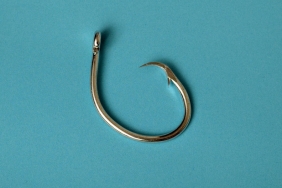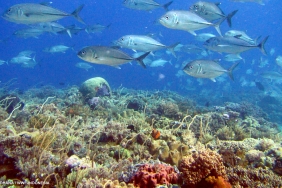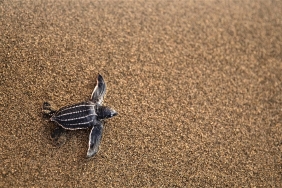BMP KOTONI, SACOL AND SPINOSUM SEAWEED CULTIVATION
Author: Nur Ahyani (Aquaculture Officer)
Indonesia is blessed with a long coastline, around 54,716 kilometers. This makes aquaculture, not only fish farming but also seaweed farming, flourish and become popular among coastal communities, either as a main or side livelihood. If feed is one of the major costs of fish farming, seaweed farming can eliminate it so that the business can be run with minimal capital. Seaweed farming requires additional feed and nutrients, the technology is simple, and the market is always available. This is what makes seaweed farming very attractive to coastal communities, most of whom are small-scale fishermen.
Seaweed farming, with all its advantages, does not mean that it can run without obstacles. In terms of location, cultivation sites often overlap with other land uses, such as fishermen, tourism operators, and local communities that use the cultivation sites as transportation routes.
Technically, seaweed farming can be easily done by simply observing other farmers. However, if the cultivation is done without proper technical assistance, it can have adverse effects on nature. For example, the use of chemical fertilizers can damage the environment and reduce the quality of seaweed. Things like this can happen if farmers do not receive assistance, either from local agencies, extension workers, or local farmer groups. Therefore, as part of the farming practice, it is recommended that farmers work together and form groups. Higher bargaining power and easier problem solving are some of the advantages of a farmer joining a group. Although in reality, most farmers in Indonesia are still working solitarily.
Referring to these challenges, WWF-Indonesia created Better Management Practices (BMP), a guidebook for responsible farming practices, for seaweed farming, specifically for Cottonii, Sacol,and Spinosum. There are four aspects that form the basis of this guidebook: legality, farming techniques, social and environmental. Literature studies and field observations were conducted to further enrich the document. After that, the document was reviewed by experts, ranging from academics, practitioners, related agencies, and representatives from related industries. The end result is BMPs that guide the practice of cultivators in the field.
BMP itself is a living document which can be updated regularly following the development of trends and input from many parties. By adopting BMPs, farmers are guided towards economically, environmentally and socially responsible farming practices. With that, seaweed farming in Indonesia can continue to be sustainable in Indonesia.





